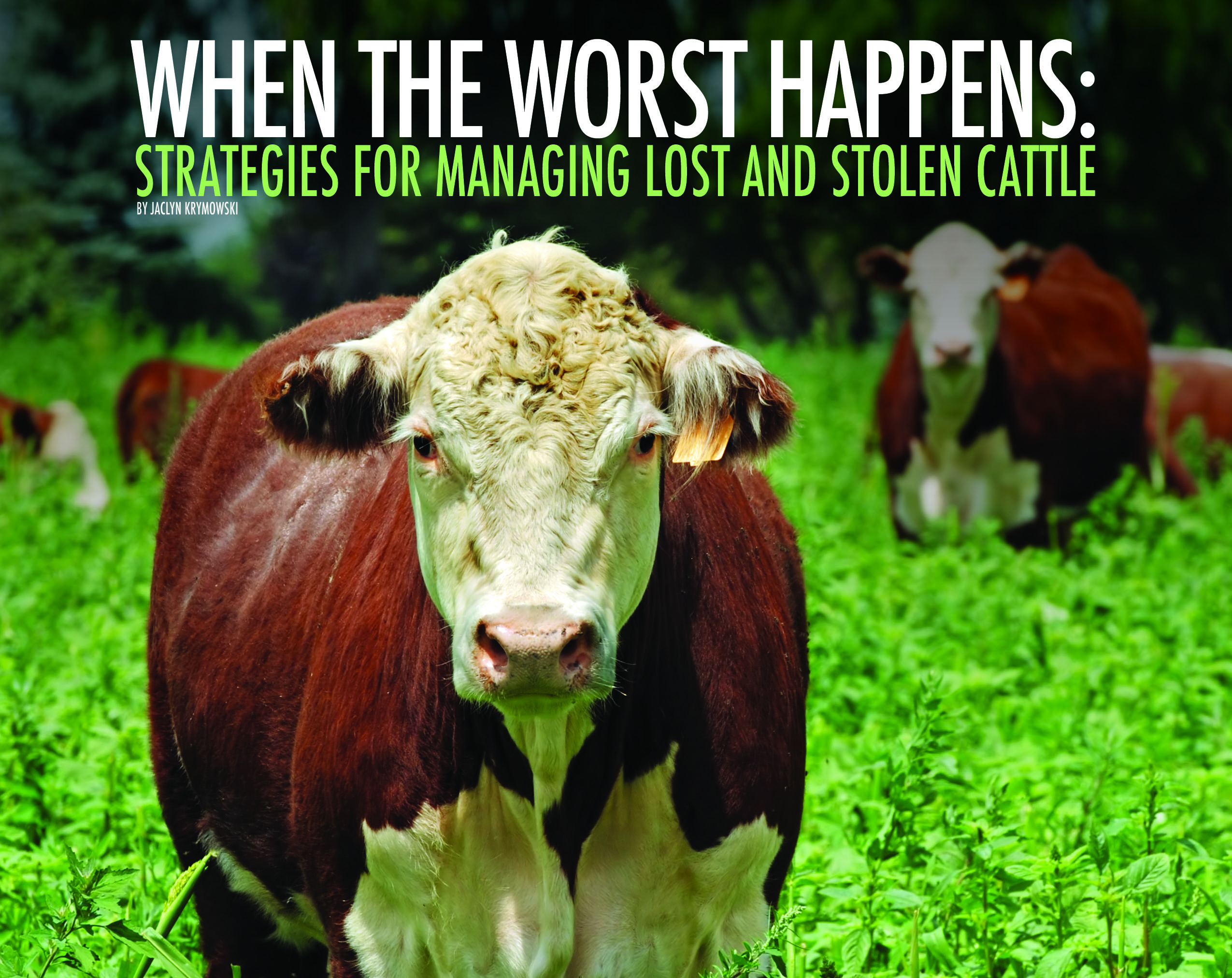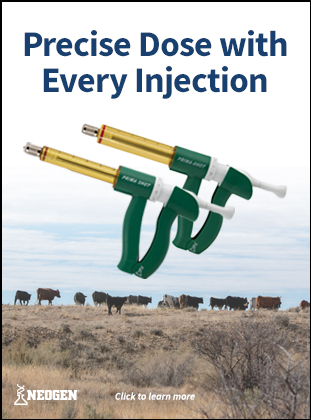When the Worst Happens

When the Worst Happens ~ Strategies for Managing Lost and Stolen Cattle
By: Jaclyn Krymowski
There are many issues that can arise on the ranch. If you’ve been in the business long enough, you are bound to run into common issues and likely will face rare ones too. However, it’s best to be as prepared as possible on both ends of the spectrum.
An uncommon but very real example is stolen and missing animals. Whether they become displaced due to a down fence, natural disasters or malicious interference, it’s best to ensure your cattle are properly identified and documented for smooth recovery.
The Case of Stolen and Missing Cattle
The loss of cattle isn’t just a financial setback; it’s a deep personal blow. Ranchers pour countless hours of dedication, commitment, and passion into raising their herds. Stolen cattle represent not just a financial loss, but a loss of invested time and effort.
Financially, the impact can be significant. While the cost to replace cattle comes with a hefty price tag, the true loss goes beyond the immediate expense. Consider a bred heifer – all the work that went into raising her to this point is gone. Depending on her stage of pregnancy, this loss could mean the absence of a future replacement animal or marketing income. In essence, cattle theft strikes at the very heart of a rancher’s livelihood and future plans.
In the last decade, as with so many other types of crime, livestock theft has become more organized and more frequent. And this isn’t limited only to cattle. Behind livestock, high-value equipment is a prime target for many thieves.
Ranches are a particular risk because it is not always easy to spot a missing animal in a large group for days. As well, cattle are usually pastured in remote locations with little to no oversight making it very easy for thieves to quickly move in and out.
Reporting Incidents
The first step when you do notice any missing animals is to file a report with law enforcement and your livestock inspection program.
Remember that the more details you can include, the better. Besides brand, tattoo and ear tag information, list any other distinct marking or features such as approximate age and condition.
When any livestock is found, arrangements will be made for the owner to recover their animal(s). The person who files the “found livestock” is eligible to be reimbursed for any feed expenses. Or, they can ask for money to help with property damages, according to the Washington State Department of Agriculture.
Of course, be sure to familiarize yourself in advance with your own state’s unique law and protocol related to lost and stolen livestock. This is important because oftentimes there are other guidelines that the person who found the animal can follow. Being aware of some of the responsibilities you may have to the person who recovered the animal is important to note so you are not blind sided.
Protecting Your Herd from the Worst
There are a few ways to ensure that your herd is protected and to deter potential threats from thieves or others intent on messing with your livestock. This can include animal extremist groups who have been known to trespass and steal animals in the name of illegal “open rescue” efforts.
It’s a good practice to routinely count animals. This may be at feeding times and handling events or when inspecting fencing. If you have some pens or pastures that are alongside heavily traveled roadways, you will want to prioritize inspecting more often and have gates with robust locks.
In this same spirit, it’s important you and your entire team remain vigilant to any suspicious activity or persons entering your facilities. Have an open line of communication so that managers or supervisors are immediately aware of unusual happenings.
The same vigilance should go for onboarding new hires. Always ask for references and check their work histories. When possible, your manager should have a general awareness of where everyone on the team is expected to be during work hours. Don’t give out secure information or access to just anyone on the team.
For tracking and recording livestock, new technologies like GPS and satellite management are starting to enter the industry. These can provide remote visibility on the location and have strong potential to prevent livestock theft.
It almost goes without saying, but every operation should be sure that all their cattle are marked with either registered brands, tattoos, tags or some form of permanent identification to help with the recovery process and provide proof of ownership. These should always be checked every time animals are handled as tattoos and ear tags can become difficult to read over time and may require redoing.
Finally, securing facilities on a routine basis is a must for every ranch. Security cameras and alarm systems are nice when feasible. But even a nightly plan for walking fencelines, checking spare buildings and locking up after work hours will go a long way in preventing crime.
Whenever there are suspicious vehicles or unwarranted visitors on your land, don’t react immediately. Instead take a moment to assess the situation and jot down general information such as license plate numbers, vehicle information and personal profiles.
If you have a good relationship with your local law enforcement – and you should – you can make them aware of this information even if no crime has taken place. This ensures they will be familiar and can react swiftly in the event they are criminal activities.
Even with money, good equipment and good employees, there’s no silver bullet to keep yourself from becoming a victim to cattle and other ranch theft. Animals do break loose from time to time and natural disasters wreak havoc on facilities. These problems are as old as ranching itself, and not likely to cease. .
But advanced preparedness, knowing who and how to report missing or stolen cattle and a plan for being aware of cattle numbers and identities can help ease the panic and chaos in the moment. It also gives you the best shot to recover your losses.



